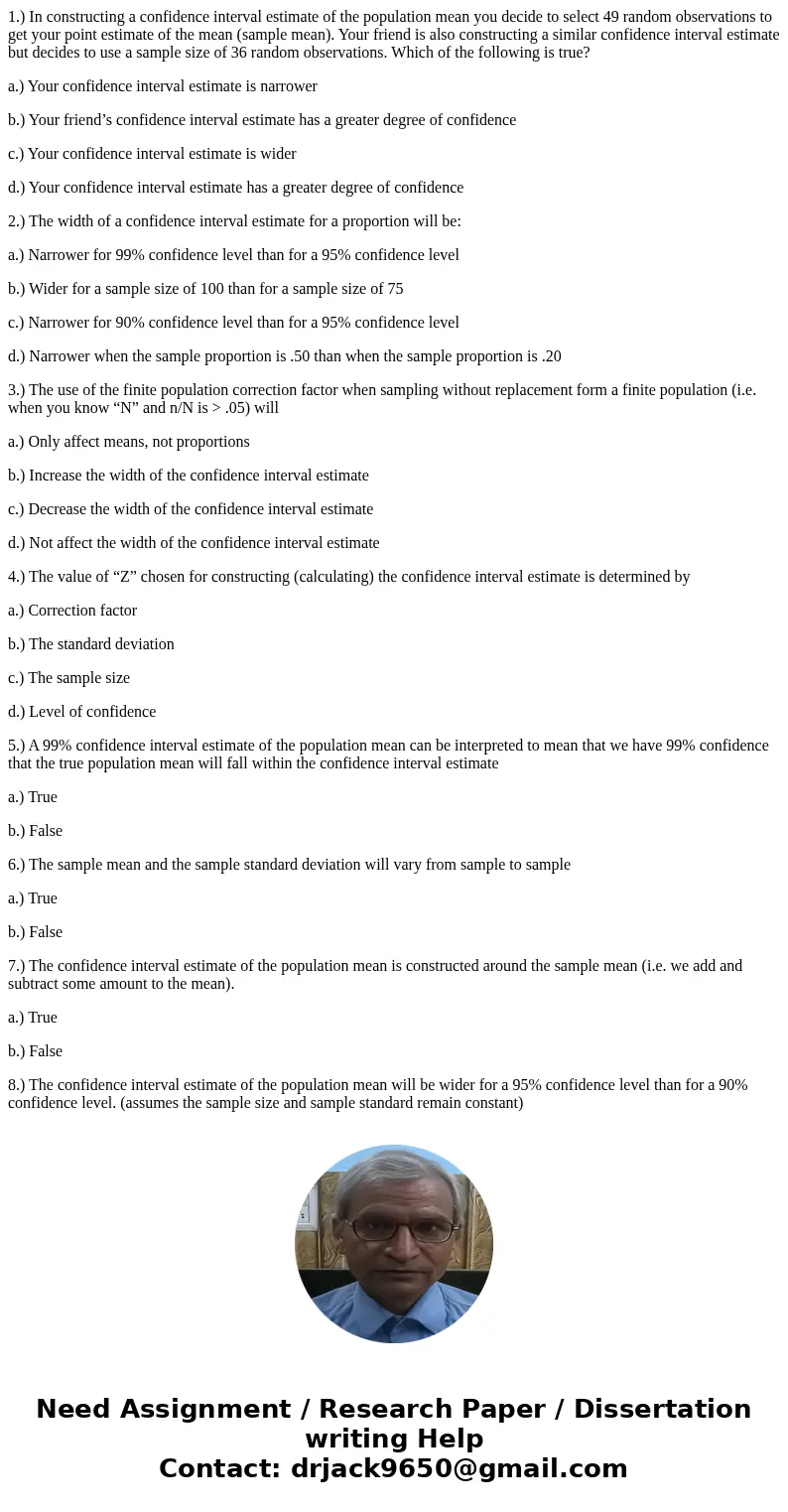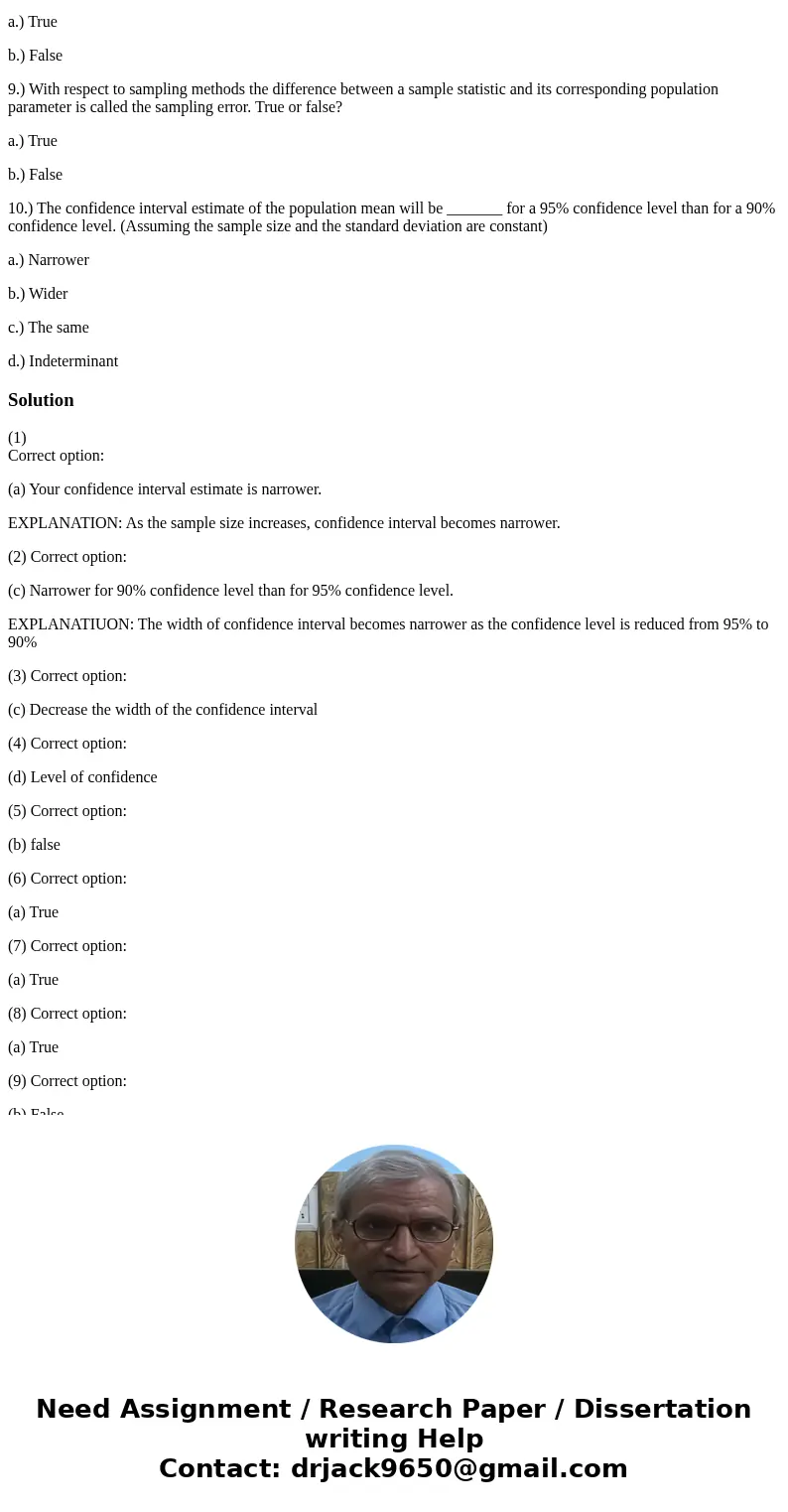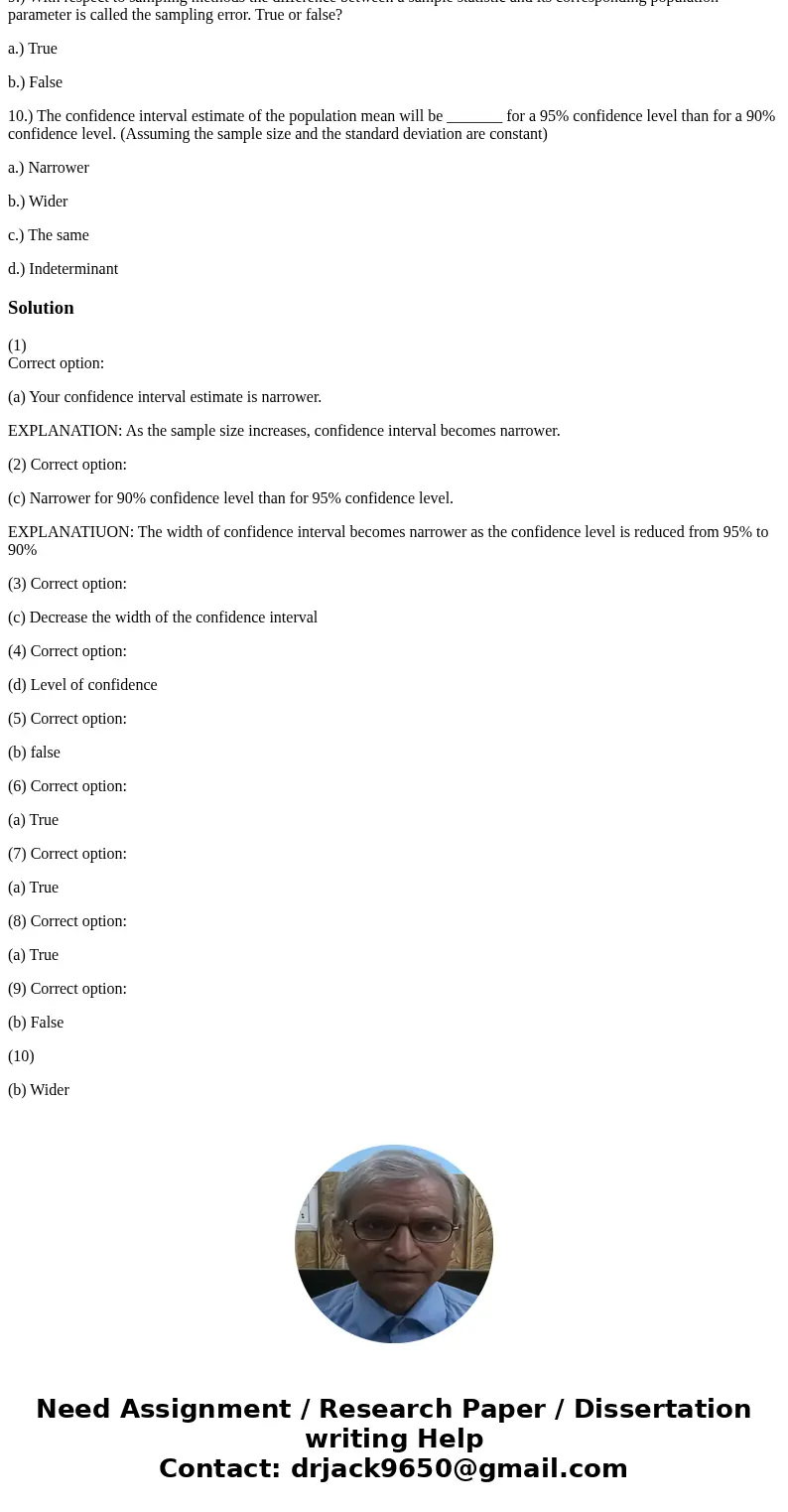1 In constructing a confidence interval estimate of the popu
1.) In constructing a confidence interval estimate of the population mean you decide to select 49 random observations to get your point estimate of the mean (sample mean). Your friend is also constructing a similar confidence interval estimate but decides to use a sample size of 36 random observations. Which of the following is true?
a.) Your confidence interval estimate is narrower
b.) Your friend’s confidence interval estimate has a greater degree of confidence
c.) Your confidence interval estimate is wider
d.) Your confidence interval estimate has a greater degree of confidence
2.) The width of a confidence interval estimate for a proportion will be:
a.) Narrower for 99% confidence level than for a 95% confidence level
b.) Wider for a sample size of 100 than for a sample size of 75
c.) Narrower for 90% confidence level than for a 95% confidence level
d.) Narrower when the sample proportion is .50 than when the sample proportion is .20
3.) The use of the finite population correction factor when sampling without replacement form a finite population (i.e. when you know “N” and n/N is > .05) will
a.) Only affect means, not proportions
b.) Increase the width of the confidence interval estimate
c.) Decrease the width of the confidence interval estimate
d.) Not affect the width of the confidence interval estimate
4.) The value of “Z” chosen for constructing (calculating) the confidence interval estimate is determined by
a.) Correction factor
b.) The standard deviation
c.) The sample size
d.) Level of confidence
5.) A 99% confidence interval estimate of the population mean can be interpreted to mean that we have 99% confidence that the true population mean will fall within the confidence interval estimate
a.) True
b.) False
6.) The sample mean and the sample standard deviation will vary from sample to sample
a.) True
b.) False
7.) The confidence interval estimate of the population mean is constructed around the sample mean (i.e. we add and subtract some amount to the mean).
a.) True
b.) False
8.) The confidence interval estimate of the population mean will be wider for a 95% confidence level than for a 90% confidence level. (assumes the sample size and sample standard remain constant)
a.) True
b.) False
9.) With respect to sampling methods the difference between a sample statistic and its corresponding population parameter is called the sampling error. True or false?
a.) True
b.) False
10.) The confidence interval estimate of the population mean will be _______ for a 95% confidence level than for a 90% confidence level. (Assuming the sample size and the standard deviation are constant)
a.) Narrower
b.) Wider
c.) The same
d.) Indeterminant
Solution
(1)
Correct option:
(a) Your confidence interval estimate is narrower.
EXPLANATION: As the sample size increases, confidence interval becomes narrower.
(2) Correct option:
(c) Narrower for 90% confidence level than for 95% confidence level.
EXPLANATIUON: The width of confidence interval becomes narrower as the confidence level is reduced from 95% to 90%
(3) Correct option:
(c) Decrease the width of the confidence interval
(4) Correct option:
(d) Level of confidence
(5) Correct option:
(b) false
(6) Correct option:
(a) True
(7) Correct option:
(a) True
(8) Correct option:
(a) True
(9) Correct option:
(b) False
(10)
(b) Wider



 Homework Sourse
Homework Sourse